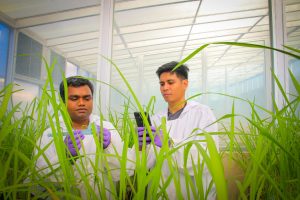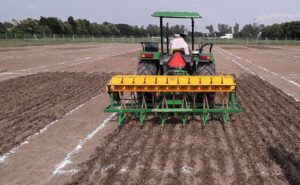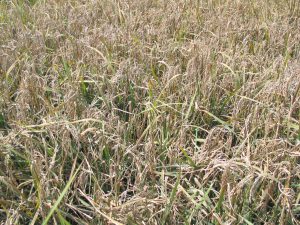
Rice farmers, like most people, instinctively abhor bugs, especially in their fields. This makes them easy targets for those unscrupulous insecticide marketers who exploit their fears. We have found that farmers wildly overestimate their real or potential losses to insect pests, usually by at least a multiple of 10, and that most of their insecticide applications are ineffective or even counterproductive, needlessly threatening their health, reducing their income and polluting the environment.
The good news is that sound advice to help farmers avoid unnecessary spraying — simple rules of thumb widely disseminated through popular media — can counteract the irresponsible advertising that some insecticide purveyors employ, sharply reducing farmers’ spraying without hurting their harvest.
On-farm surveys in 10 Asian countries showed that farmers routinely spray insecticides, including those banned in the West as unacceptable hazards to human health, early in the crop cycle to control leaf-feeding insects collectively dubbed “worms.” Yet research has shown that young rice plants can lose 40% of their leaves — or more than 4 times the damage typically caused by leaf-feeders — without suffering any yield loss. Detailed analyses of farmers’ insecticide use in the Philippines and Vietnam showed that 80% of their applications targeted the wrong insect at the wrong time and so offered no economic return.
Farmers able to make correct decisions about when and what to spray still face the problem of effective delivery. Even with optimal weather, spraying equipment and skills, a third of the spray lands uselessly on the ground. And the reality is that the spraying equipment used by Asian rice farmers is notoriously inefficient, emitting large droplets that immediately roll off the leaves. The result is that less than 2% of the insecticide sprayed on rice in Asia is likely to reach targeted insect pests. The rest contaminates the paddy water and soil, contributing to environmental pollution and killing beneficial insects and aquatic fauna. Under prevailing conditions in most of tropical Asia, rice farmers would be better off using no insecticides at all.
Ironically, predators of rice pests, such as spiders, are at greater risk of pesticide poisoning than the pests themselves because they are more mobile. Similarly, parasites that target pests are susceptible because they are small. Moreover, some pests pass their larval stage inside the rice plant, safely beyond the reach of sprays. Farmers’ insecticide applications can thus disrupt natural biological control mechanisms in rice ecosystems, perversely creating environments that favor pests. A clear link exists, for example, between excessive insecticide use and outbreaks of brown planthopper. A study in the Philippines found that three sprayings before maximum tillering (or branching) resulted in 56 million more rice pests per hectare — and 14 million fewer natural enemies.
In the Mekong Delta of southern Vietnam, we conducted a media campaign using fliers, posters, billboards and radio spots to encourage farmers to withhold insecticides on part of their crop during the first 40 days after sowing and to compare the result with the sprayed portion. Farmers in the test area more than halved their spraying from an average of 3.4 sprays per crop to only 1.6 sprays. The subsequent Three Reductions campaign additionally encouraged farmers to reduce their seed and fertilizer use to optimal rates, thereby saving input costs while discouraging insect pests. This campaign saw the average number of insecticide applications per crop fall below one. Infestations of brown planthopper, which decimated local rice fields in the early 1990s, are now a thing of the past.
Pesticide-reduction campaigns in central Thailand and northern Vietnam have yielded similarly encouraging results, but our message has so far reached only a tiny minority of the more than 200 million rice farmers worldwide. Meanwhile, the pesticide industry continues its fear-based advertising, threatening to undo the progress we have made and to spread insecticide misuse to the few areas still unaffected.
Laos is particularly vulnerable, wedged between pesticide-producing Vietnam, Thailand and China. So far, few Lao farmers use insecticides, but only for lack of supply. Like their counterparts elsewhere, they welcome easy “solutions” to their pest problems. Protecting them urgently requires a comprehensive policy to regulate the importation, manufacture and marketing of pesticides. Also needed are programs to educate extension technicians and farmers on the health hazards and ecological principles that govern responsible pesticide use.
_________________________________________
K.L. Heong is an entomologist.










